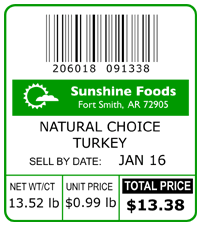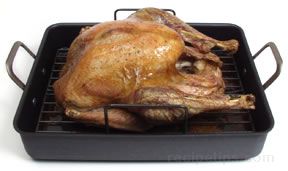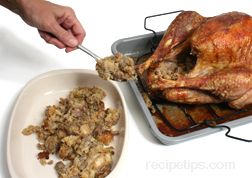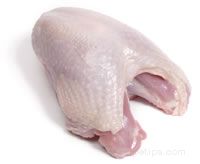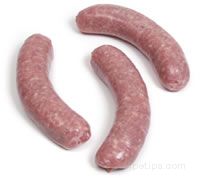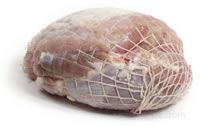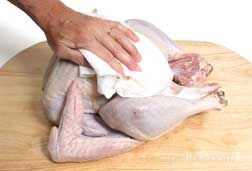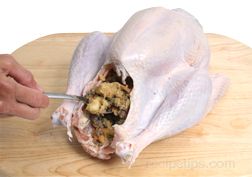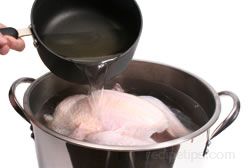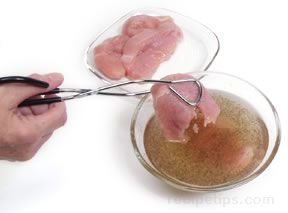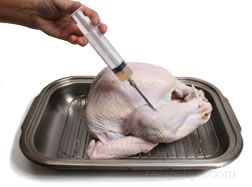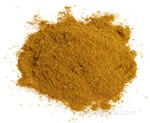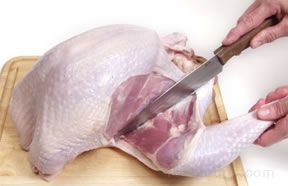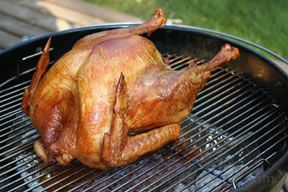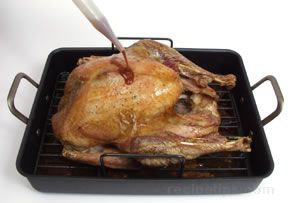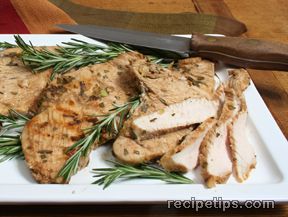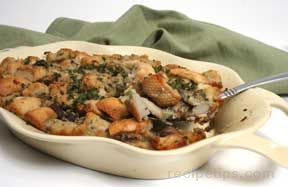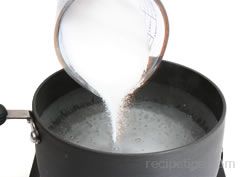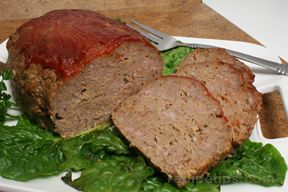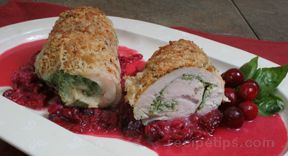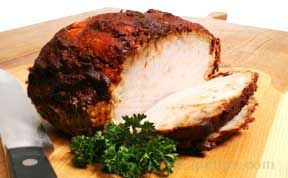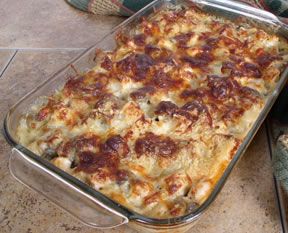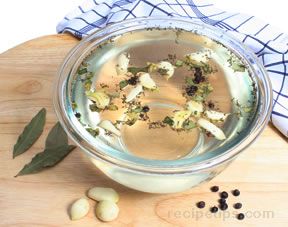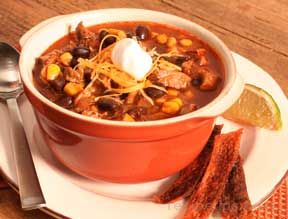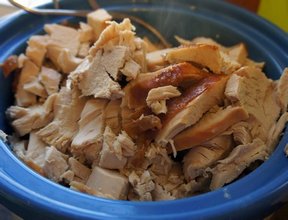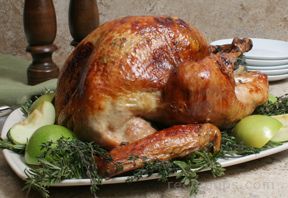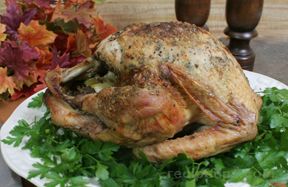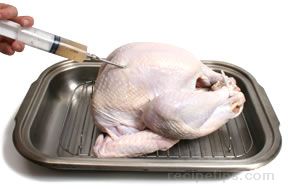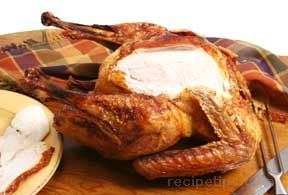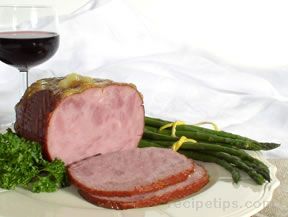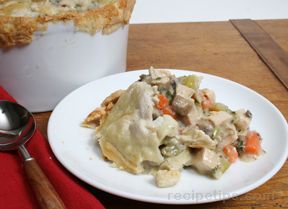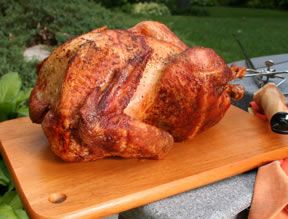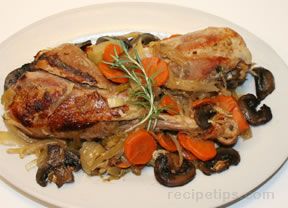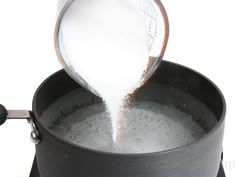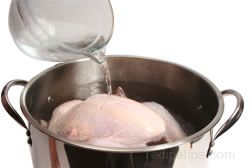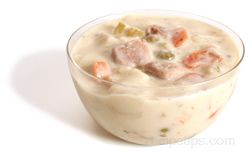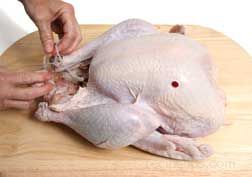Classification Criteria | Classes of Turkey | Types of Turkey
 Turkey (as well as all other poultry) is described and classified using a number of different criteria, which are described below. | |
| Kind | Describes whether the poultry is turkeys, chickens, ducks, etc. |
| Class | Describes how the poultry is categorized, such as a fryer or roaster. |
| Grade | Describes the quality of the bird based on USDA (United States Department of Agriculture) guidelines. Common grades for poultry are A, B, and C, with A being the designation for the best quality. |
| Style | Describes the bird as being whole, cut into sections (halves, quarters, etc.), or cut into individual parts (breast, leg, thigh, etc.). |
| Size or Weight | Turkeys are specified by individual weight. |
| Type | Describes a turkey as being fresh, frozen, hard-chilled, etc. |
| Packaging | Specifies how the turkey is packaged at the processing company. Most turkeys are individually wrapped and may be shipped several to a container. |
| Temperature | Describes the ideal temperature for fresh, frozen, or hard-chilled turkeys for processing, shipping, and storing. |
| Breed | Quality, flavor, size, and the ratio of meat to bone can be affected by the breed of the turkey. White Holland is the breed that is most often raised for commercial purposes. |
| Class | Description |
| Fryer / Roaster | A small turkey of 4 to 8 pounds is classified as a fryer-roaster and is usually no older than 4 months. |
| Young | A 4 to 8 month old turkey is referred to as a young roaster, which has soft, smooth skin and tender meat. |
| Yearling | A 12 month old turkey is called a yearling and the meat and skin are still reasonably tender, but not as tender as a young turkey. |
| Mature or Old | A mature turkey is 15 months or older and is not well suited for roasting because the meat is much tougher. |
| Note: Whole turkeys may be labeled hen or tom turkey, but this does not make a significant difference in the quality. The flavor and tenderness of the meat is determined by the age of the turkey at the time it is brought to market, rather than the gender. Most turkeys used for roasting are between 4 and 9 months old and range in weight from 8 to 24 pounds. |
|
Fresh Any turkey labeled "fresh" in a food store has never been cooled to a temperature lower than 26°F, which is the point that turkey meat begins to freeze. A fresh turkey should be cooked no later than 2 days after it is purchased or by the "use by date" on the label, otherwise it must be frozen until it is ready to use. Some turkey processors label their fresh turkeys as "refrigerated" rather than fresh in order to prevent confusion with the consumer. Fresh turkeys that are chilled to 26°F may seem a bit stiff on the surface, as though they have been frozen when they actually have not. The cost of a fresh turkey may be a bit higher than a frozen turkey because of special handling requirements. The processor must ensure that the turkey remains at a temperature of 26°F from the factory to the market and the market must ensure that their refrigerated case does not climb above 38°F to 40°F. |
|
Frozen Although turkey meat begins to freeze at 26°F, in order to be considered "frozen" a turkey must be cooled to a temperature of 0°F or below. Commercial processing companies use a flash freezing process that quickly cools turkeys to 0°F or below. This ensures that when the turkey is defrosted, the meat will be at the same level of freshness as the day it was originally frozen. There is no difference in the quality of turkey that is fresh or commercially frozen, but fresh turkey that is placed in a home freezer may deteriorate more quickly than turkey that has been flash frozen in commercial equipment. This is because home freezers are not able to cool the meat as quickly as commercial freezers. Listed below are several other important
|
|
Hard-Chilled Turkeys that are hard-chilled are cooled to temperatures between 0°F and 26°F. They are not considered fresh or frozen and so they are not labeled as such. Since they are not considered frozen, the turkeys must be handled as though they are fresh to ensure proper food safety. |
|
Turkey Parts Turkey is often cut into parts, packaged, and sold fresh or frozen. Turkey breasts, drumsticks, thighs, and wings are often sold this way. The breast section of a turkey is quite large and it is often cut into smaller cutlets that are thinly sliced. |
|
Ground Turkey Turkey parts can be ground and used in the same way as beef cuts that are ground into hamburger. Ground turkey can be used to make patties, meatloaf, casseroles, and many similar types of dishes and it has much less fat than ground beef. |
|
Specialty Turkeys
|





